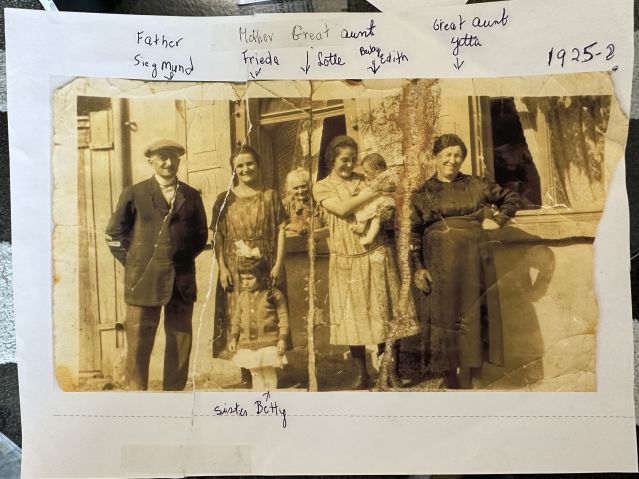Family Dynamics
How Photos and Social Media Posts Wound Distanced Family Members
What to do with old photos and social media accounts when there's no contact.
Updated June 27, 2023 Reviewed by Abigail Fagan
Key points
- Photographs can be sweet reminiscences of another time and painful reminders of all that has been lost.
- Before throwing out old family photos, think of the children who might want documentation of the family tree.
- Social media makes it hard to avoid painful images as these feeds may offer glimpses of estranged relatives.

Photographs spark memories and powerful emotions. At best, they elicit sweet reminiscences of another time. At worst, they are painful mementos of all that has been lost.
My mother, who fled Nazi Germany as a 12-year-old unaccompanied minor, had little use for the family photographs of her murdered relatives. She kept them hidden, never framing, or displaying them — or even assembling a family album. She avoided looking at those images; they captured the ghosts from her past. For my mother, the past was not a place to find refuge; it was a place from which she was a refugee. She was safe as long as her memory didn’t drop in like an unwelcome visitor. Photographs only extended an invitation.
Recently, however, I have been finding remarkable photographs in my 98-year-old mother’s apartment. Above, for example, is the earliest photo I've seen of my mother. Taken in 1925 in Stockstadt am Rhein, Germany, Edith is pictured here when she was only months old. The second woman from the right is holding her, and that's her older sister, Betty, standing in front of their mother. Edith and Betty survived the Holocaust, as my grandparents had the foresight to send both of them — separately and alone — to America when they were only 12 and 14 years old. Tragically, my grandparents were murdered.
The discovery of these hidden photos prompted thoughts of what the estranged do with their old family photographs. In some ways, my mother and the estranged share the same quandary over these mementos.
The estranged and family photos
The estranged may wish these photos would simply go away. In the fury of the moment, many are tempted to deface or eradicate memories by scissoring out the estranged from family photos. Some may simply discard the photographs and other remembrances to release themselves of this distressing burden. While that may relieve the embittered, it does not serve the larger family.
“The pictures are not just about you,” says Marian Grande, Family Mediator and Divorce Coach in Ontario, Canada. “They are about a family. Your family. Your kids. One day your adult children will likely want to show their own children a piece of their family history. Deleting photos is like deleting a part of who they are. It is essentially deleting the documentation of the family tree.”
Grande offers the following suggestions for preserving photographs:
- Retain a photo organization service. Leave photos in a digital format and keep passwords available so the organizer has access to retrieve them from cloud sources.
- Back up photos to an alternative source, such as a computer, jump drive or external hard drive. That secures the photos in case they are removed from your shared cloud or hard drive without your knowledge.
- If your photographs are loose or in photo albums, put them all in a box clearly labelled. When gathering the photos, use plastic, which allows you to know what’s inside. However, this is only a short-term solution for storage as the plastic releases chemicals that will deteriorate the photo in time.
- To preserve printed photos, acid-free boxes and sleeves are best for storage.
To keep or not to keep social media accounts
In the age of social media, those images are peskier and tossing physical photographs doesn’t necessarily rid the estranged of those painful portraits. It’s much more difficult to make a clean break when Facebook updates, Twitter feeds, and Instagram pictures offer constant glimpses of estranged relatives. Exposure to an estranged relative’s posts, “likes,” comments, and photographs, whether direct or indirect (through a relative’s or mutual friend’s feed), can be like picking at scabs, preventing emotional wounds from healing and inhibiting the grieving process.
The estranged need to carefully weigh the risks and rewards of social media. If an estranged relative is aggressive, it might be best to avoid these platforms, which can become another battleground. But if users can tolerate feelings of exclusion and jealousy that might result from seeing an estranged relative’s posts, social media may offer a thread of a connection to that branch of the family.
Users who are deciding whether to stay connected on social media may ask themselves these questions:
- How hostile is my estranged relative?
- Is he or she likely to lash out at me on these platforms?
- How well adjusted am I to the estrangement?
- Can I stand to have some exposure to my estranged relative’s life, or will those encounters disturb my ability to accept the cutoff?
I’m glad my mother didn’t have to contend with social media posts in her day and, though she didn’t want to view them, I'm grateful she saved these buried, priceless photographs. I have struggled to understand my own identity and her history because my mother rarely spoke of her past. It was simply too painful for her to revisit and share her memories with her children. My mother’s old photographs give me some feel for the relatives I never had the opportunity to meet, and as Grande says, the images provide “documentation of the family tree.”
References
Grande, Marian (2021) https://absolutedisputeresolution.com/blog/f/what-do-you-do-with-family…


